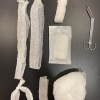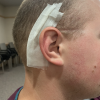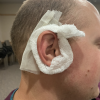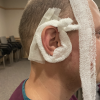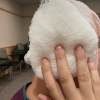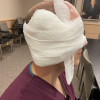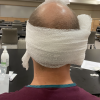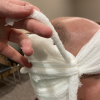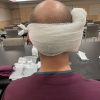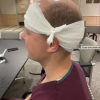Return to Otology - Neurotology;
see also: Canal Wall Reconstruction (Mastoidectomy); Mastoid Dressing Supplies (Ear Surgery Covering Materials)
Background
- Mastoid dressings are used in an effort to prevent postsurgical complications following mastoidectomy or middle ear surgery. Their main purpose is to provide pressure against the wound, in an effort to prevent hematoma or seroma. (Armanian et al 2021)
- While the use of mastoid dressings is common practice, numerous publications report limited evidence of benefit, and the potential of added complications such as skin necrosis, pressure-induced headache, and periorbital edema. (Armanian et al 2021; Luo et al 2019; Gurgel et al 2012; O'brien et al 2018)
- Varying intervals for dressing changes and overall duration of dressing use are employed in practice. Our providers prefer dressing change intervals of 24-48 hours.
Supplies
- [10x] Kerlix Super Sponges (6" x 6 3/4"; 2 packs of 5 works well)
- [3x] Kerlix Gauze Rolls (4" x 4 1/8 yd)
a. Cut three 18" strips from the first roll.
b. Set aside the second and third roll for wrapping the dressing. - [1x] Petroleum soaked gauze (3" x 18" or similar)
- Scissors
The supplies above can be pre-assembled in a kit for convenience (see: Mastoid Dressing Supplies (Ear Surgery Covering Materials))
Application
- Apply petroleum soaked gauze against mastoid incision.
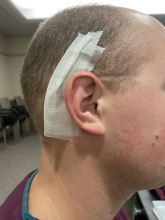
- Take the first 18" strip of Kerlix gauze roll (optional-tied into a loop), loosely place around the auricle of patient's operated ear.
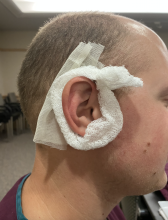
- Lay two 18" strips of Kerlix gauze roll over patient's head, with the long axis lying in the parasaggital planes of the eyes. This will leave one tail of each strip on the crown of the skull, with the other tail of each strip hanging over or lateral to the eyes anteriorly.
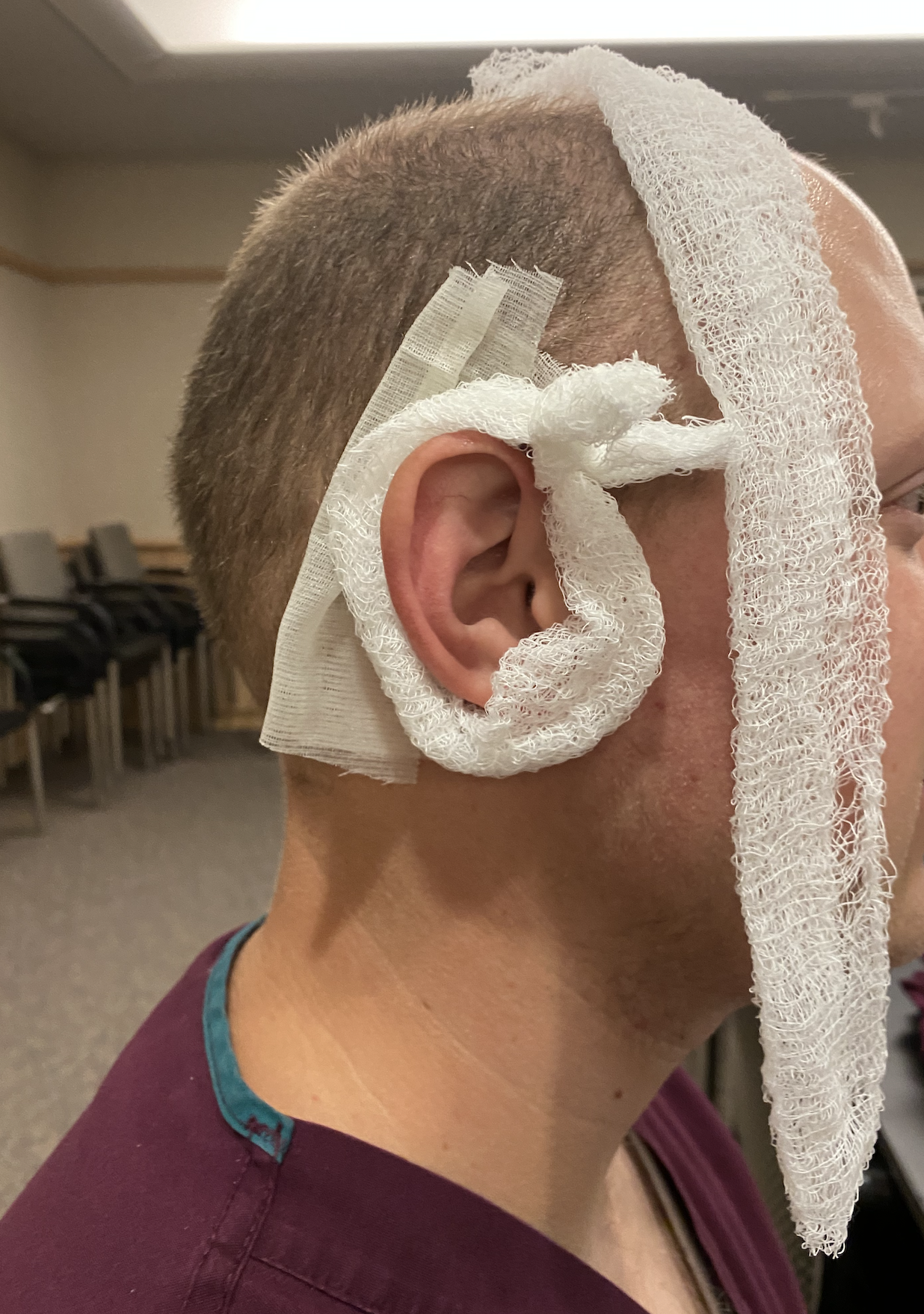
- If not previously done, create a gauze pillow with the 10 Kerlix supper sponges (see: Mastoid Dressing Supplies (Ear Surgery Covering Materials))
- Hold gauze pillow firmly against patient's operated ear, covering up the incision, petroleum soaked gauze, and first strip of Kerlix gauze roll.
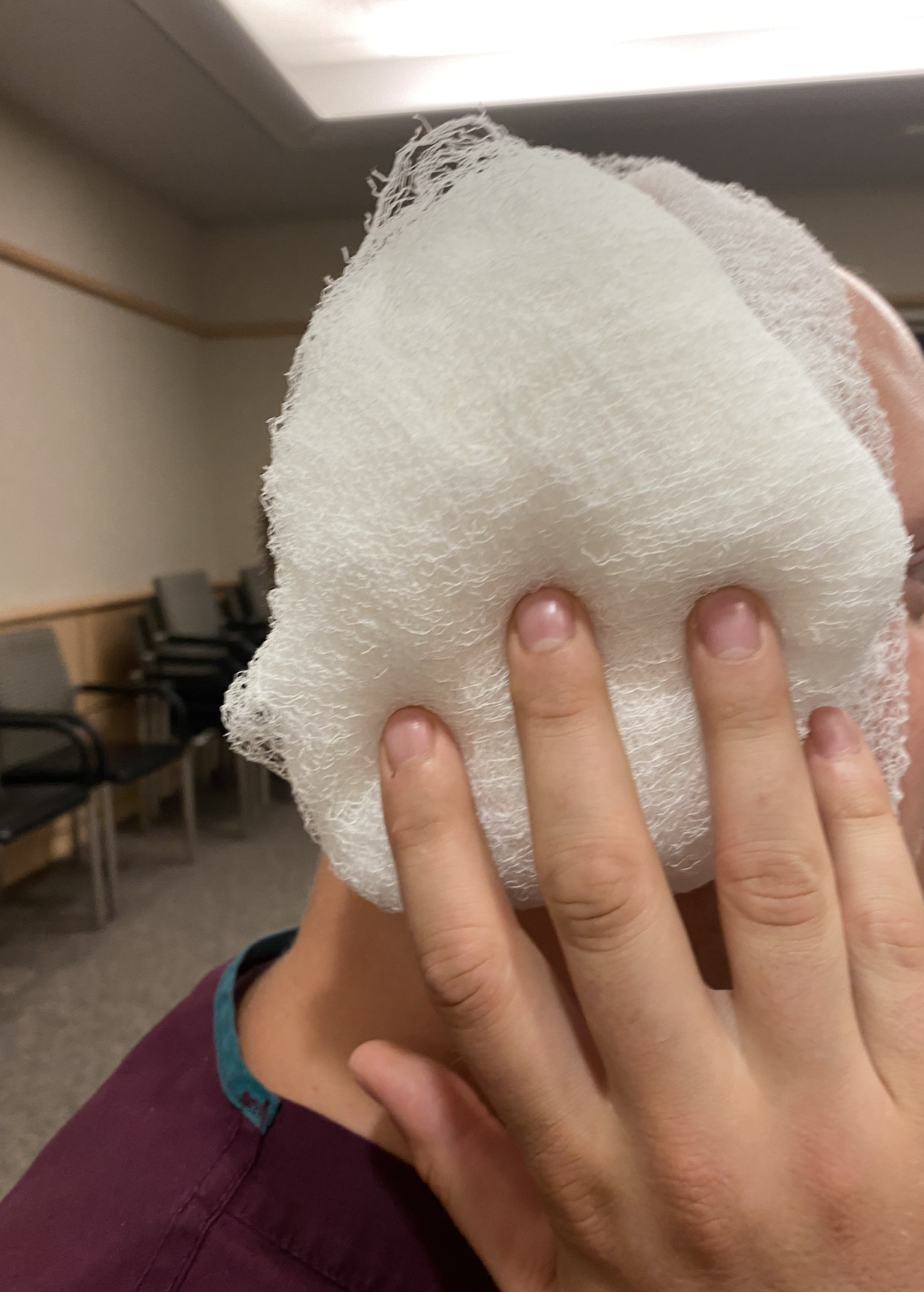
- Open two pack of Kerlix gauze roll.
- Wrap one gauze roll snugly around the patient's head and eyes, the two strips of gauze overlying the patient's head, and the gauze pillow. Start in a single plane, then wrap more superiorly and inferiorly for added support. Be sure to keep the dressing posteriorly underneath the occiput to prevent the dressing from slipping off. It is important to make sure the operative ear under the fluff dressing does not fold anteriorly on itself to prevent pressure necrosis injury, this is best facilitated by wrapping the kerlix gauze in the direction that would naturally pull the operative ear back and flat.
- After one gauze roll is used up, continue wrapping with the second gauze roll.
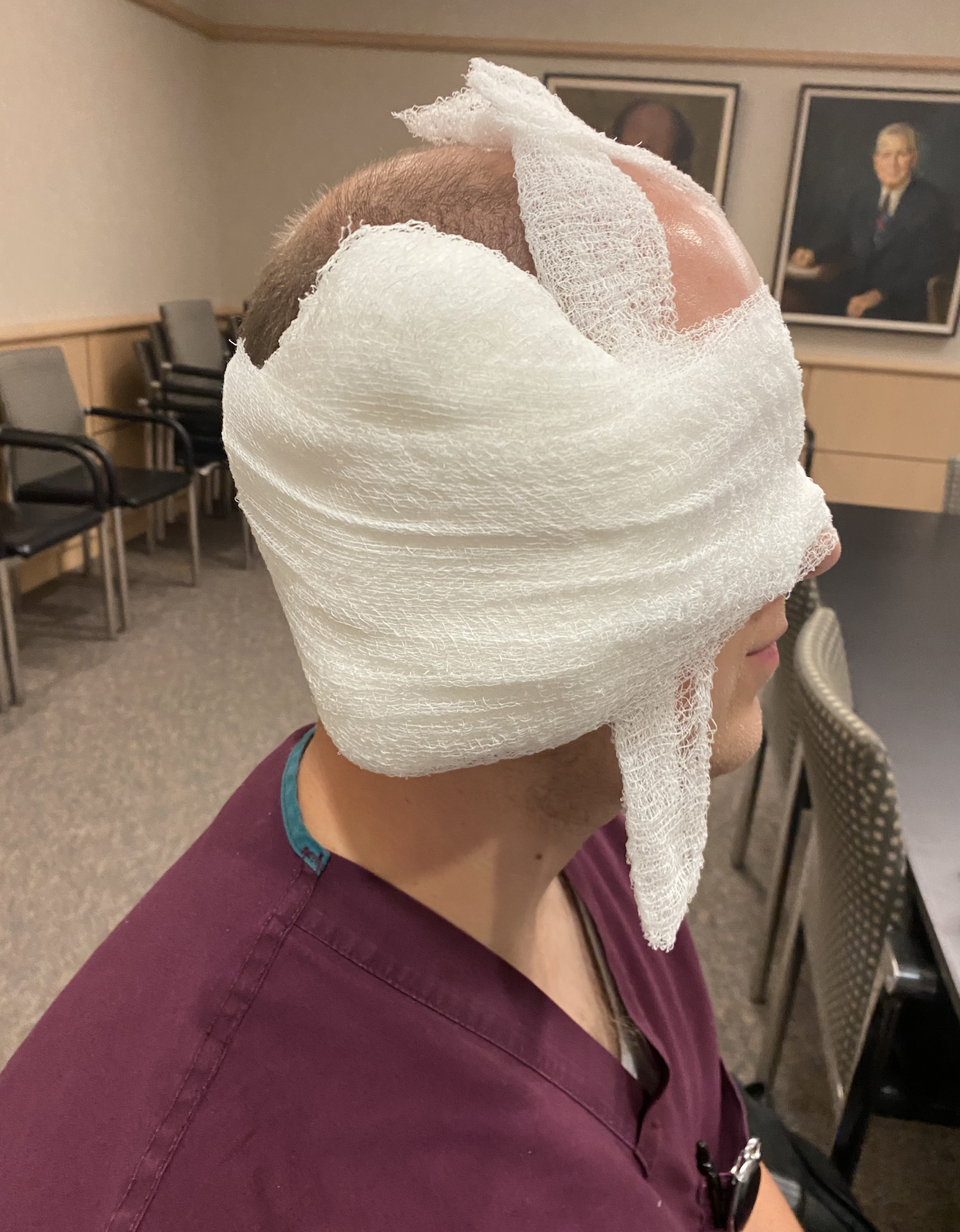
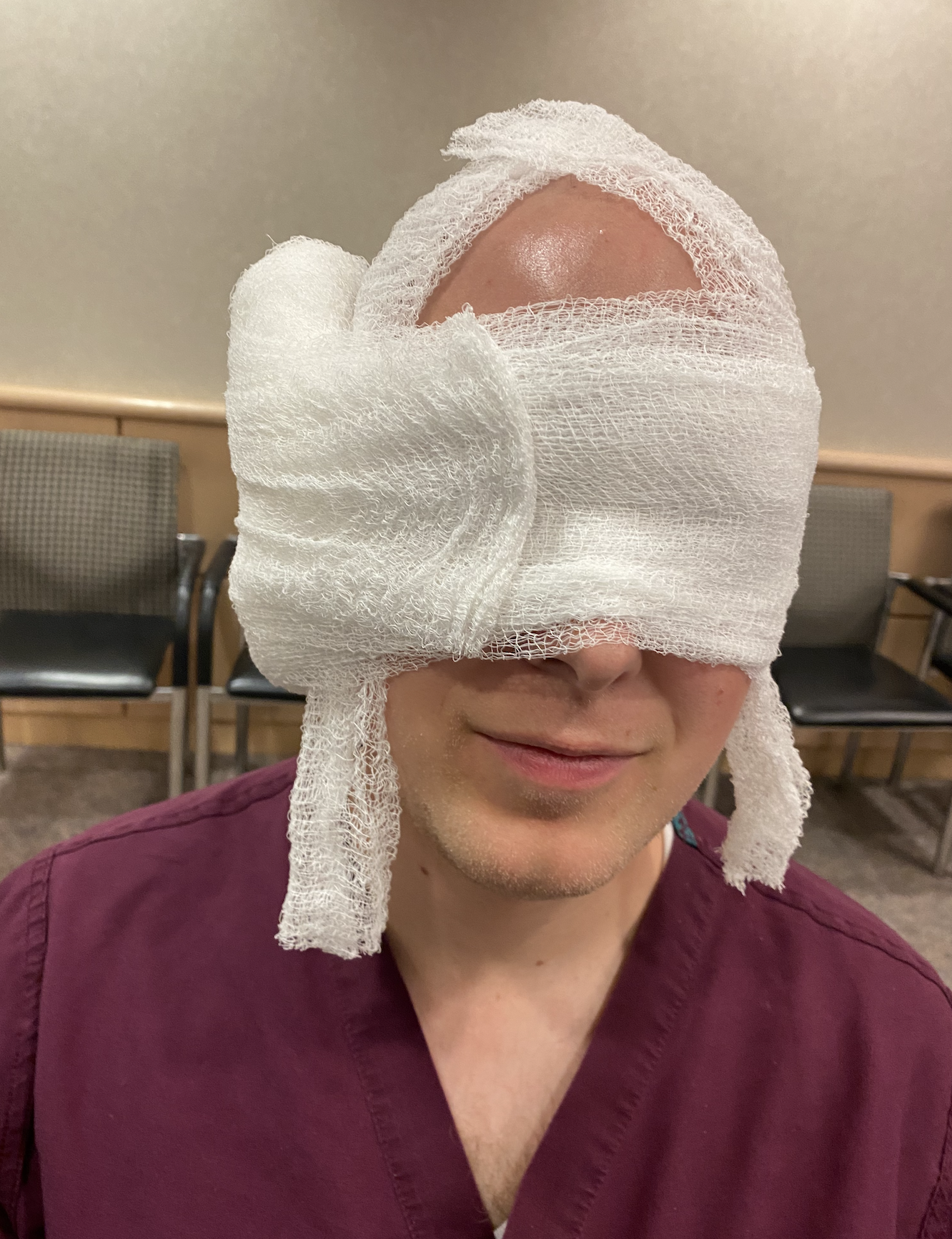
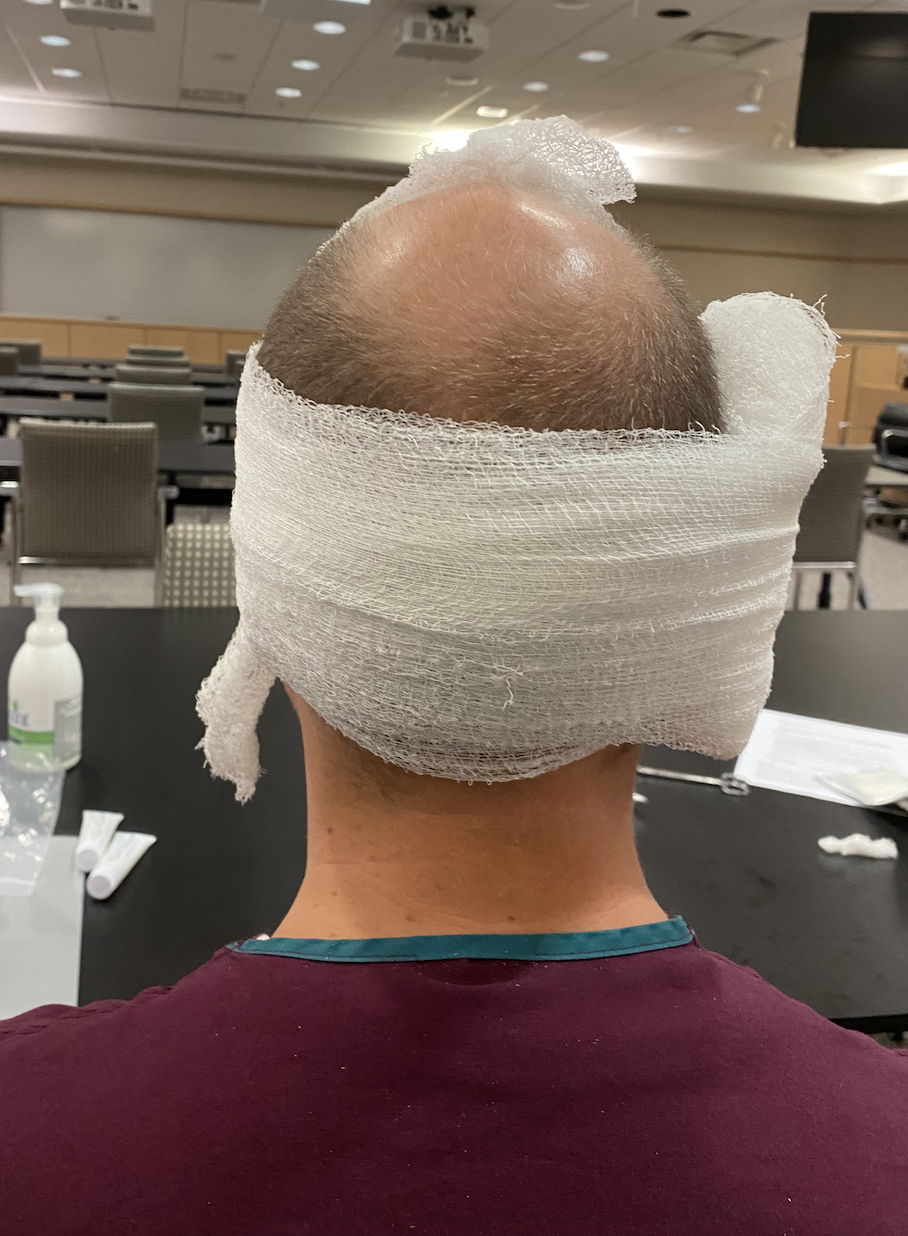
- Take the loose ends of the 18" gauze strips, bring around the wrap, and tie tightly to themselves with 3-4 throws. This secures the gauze wrap, and uncovers the patient's eyes. If the end of the gauze roll used for wrapping is closest to this side, incorporate it into the knot by pulling the end back over the knot after each throw.
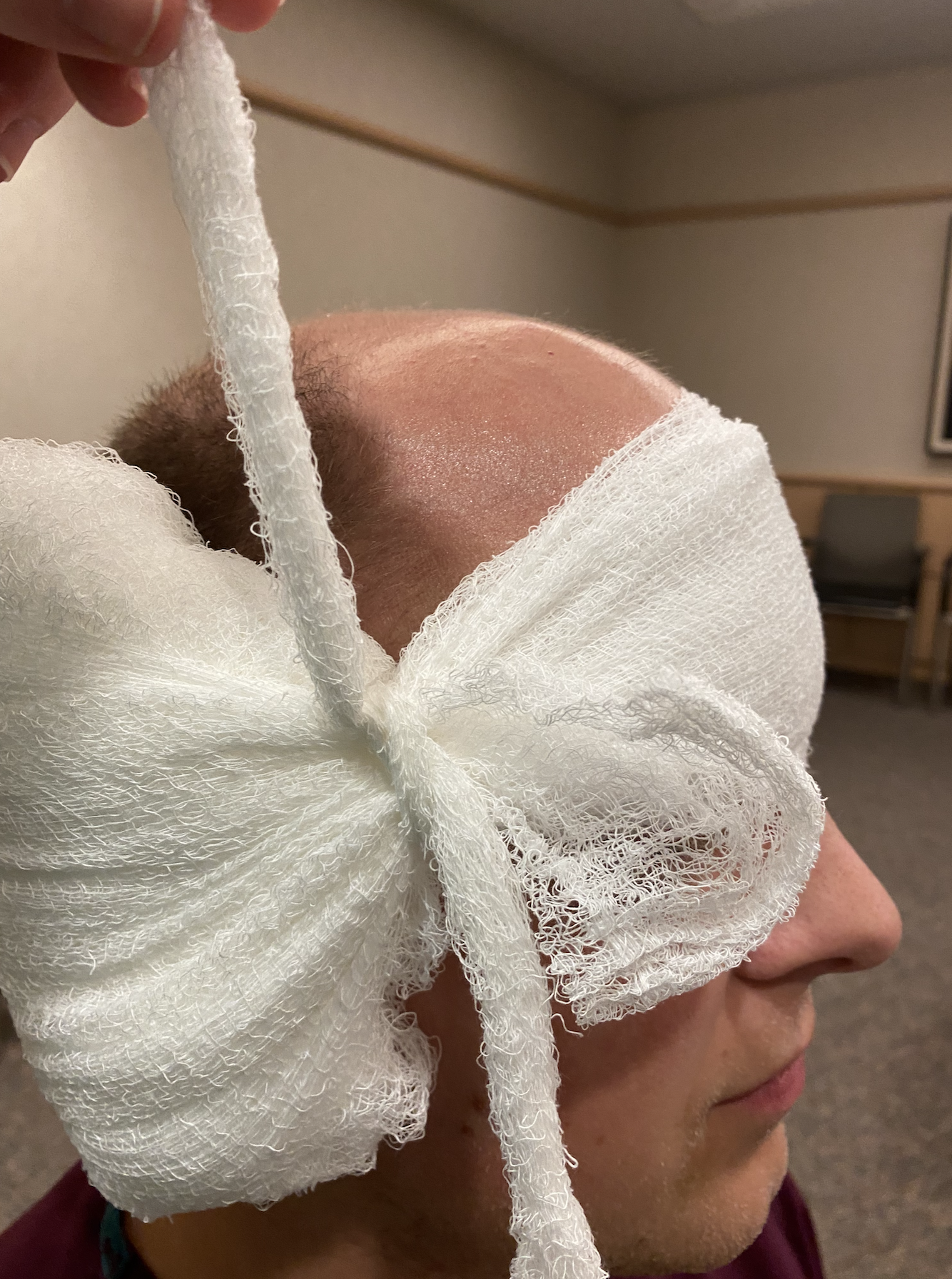

- Adjust the dressing superiorly onto the forehead to just above the eyebrows. to avoid pressure necrosis, it is important the bottom margin of the wrap over the forehead is not to o tight as to dig into the skin. If this is the case, a small releasing incision made with a scissor on the inferior margin of the wrap over the forehead can be made to reduce the pressure of the wrap.
- Use the scissors to cut the ends of the knots, leaving 1" tails.

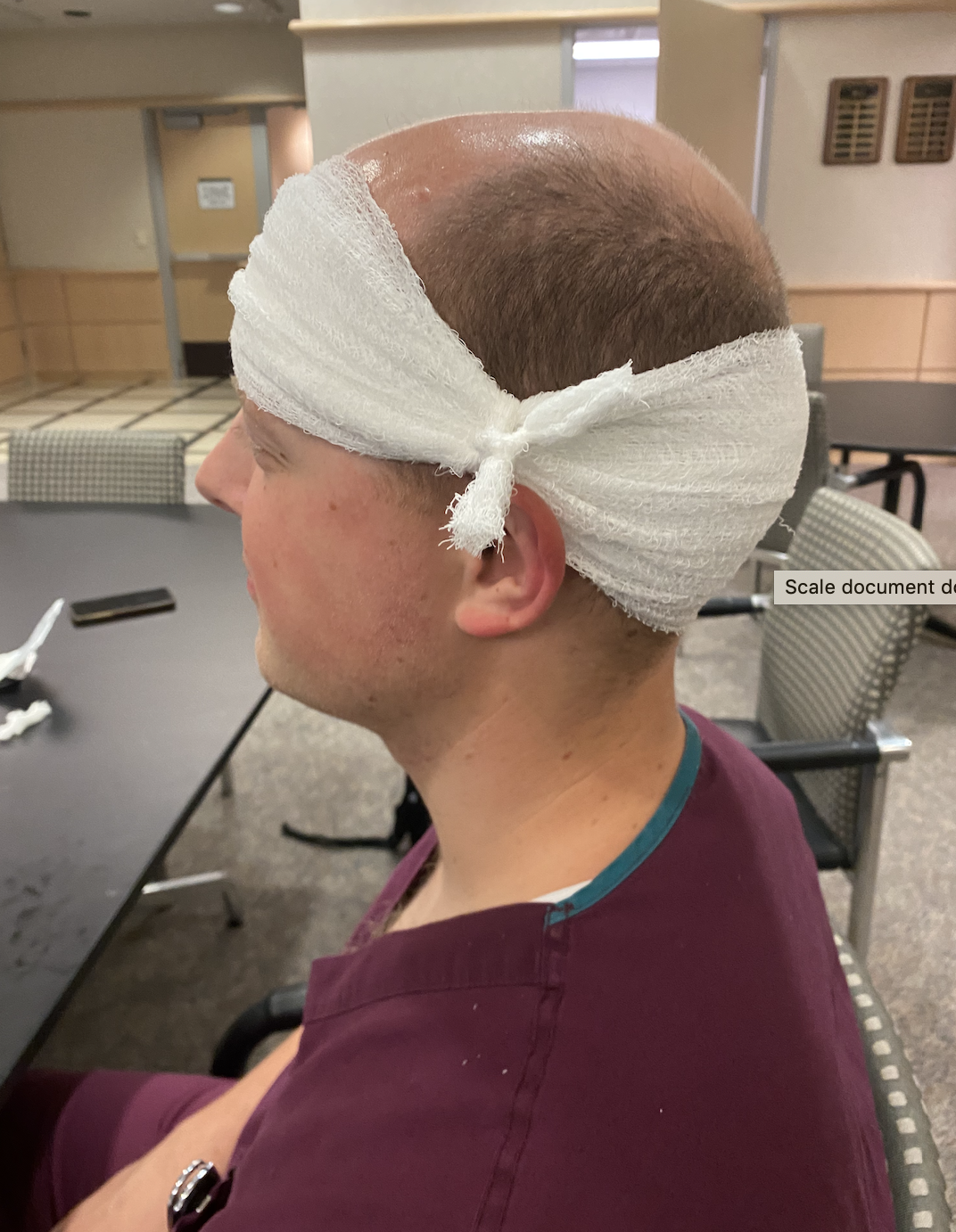
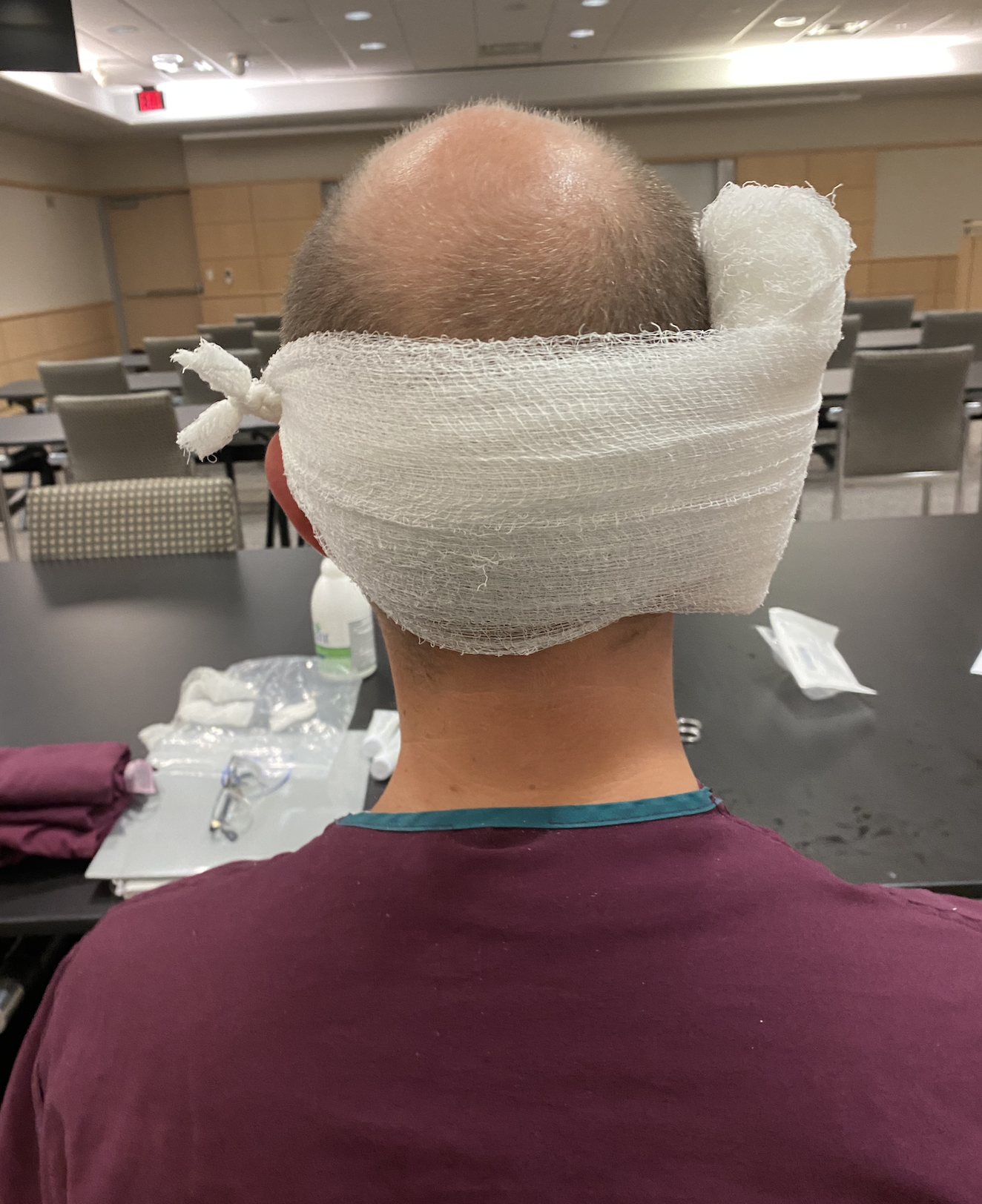
Wound Management
- Change dressing every 48 hours, or depending on provider preference
References
Amanian A, Chadha NK, Pauwels J, Kozak FK. Mastoid pressure dressing - Current practice amongst Canadian pediatric cochlear implant surgeons. Int J Pediatr Otorhinolaryngol. 2021 Jul;146:110720. doi: 10.1016/j.ijporl.2021.110720. Epub 2021 Apr 18. PMID: 33940316.
Luo SD, Su CY, Wu CM, Hwang CF. Mastoid pressure dressing for cochlear implantation--is it necessary? Int J Pediatr Otorhinolaryngol. 2009 Jun;73(6):857-60. doi: 10.1016/j.ijporl.2009.03.001. Epub 2009 Apr 11. PMID: 19362744.
Gurgel RK, Oghalai JS. Are mastoid pressure dressings necessary after otologic surgery to prevent postoperative hematomas? Laryngoscope. 2012 Mar;122(3):485-6. doi: 10.1002/lary.22472. PMID: 22354627.
O'Brien JX, Ruskin O, Price T. Pressure dressings in mastoid and middle ear surgery: are they necessary? A retrospective review of patient outcomes. ANZ J Surg. 2018 Oct;88(10):1047-1050. doi: 10.1111/ans.14370. Epub 2018 Jan 23. PMID: 29363249.
